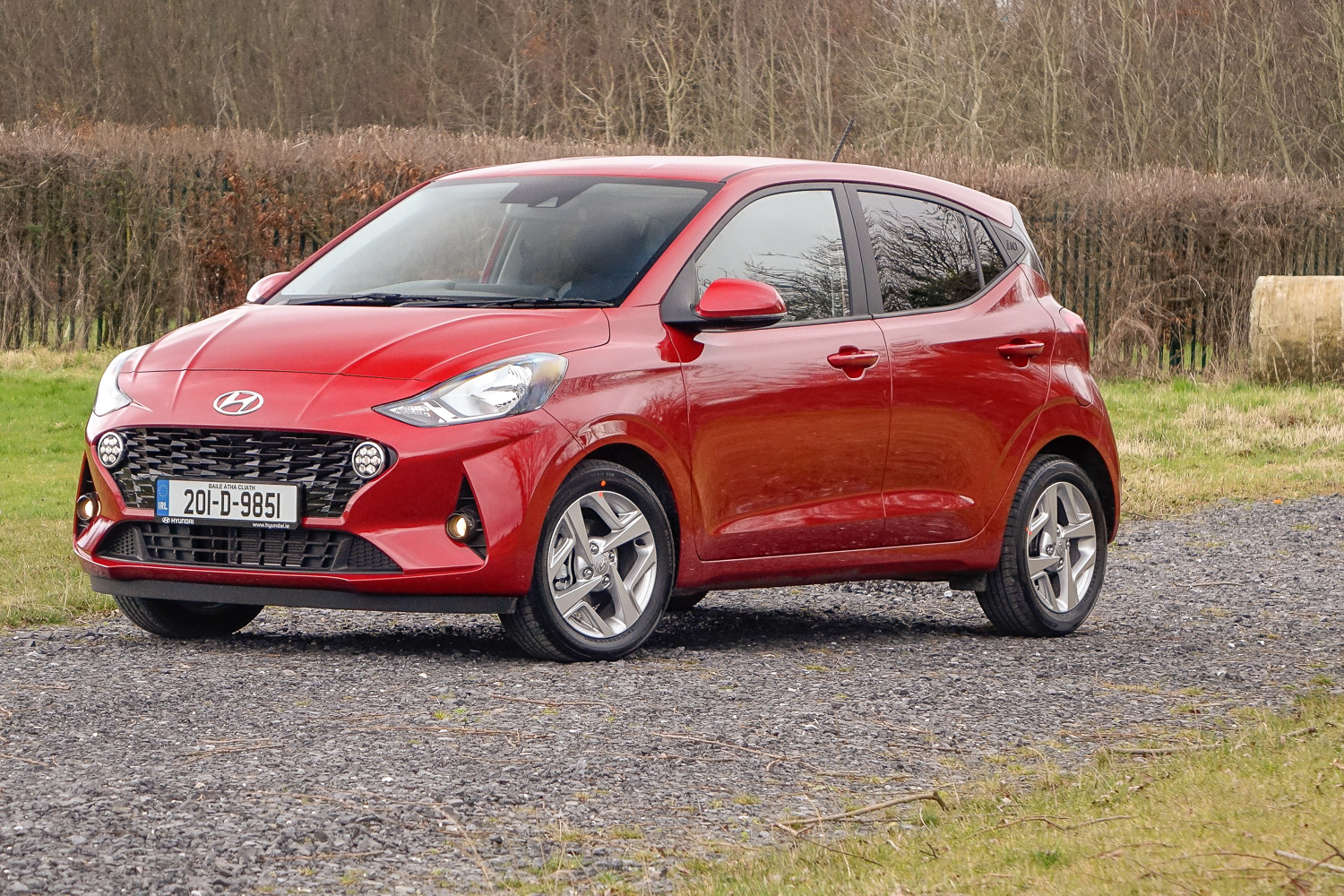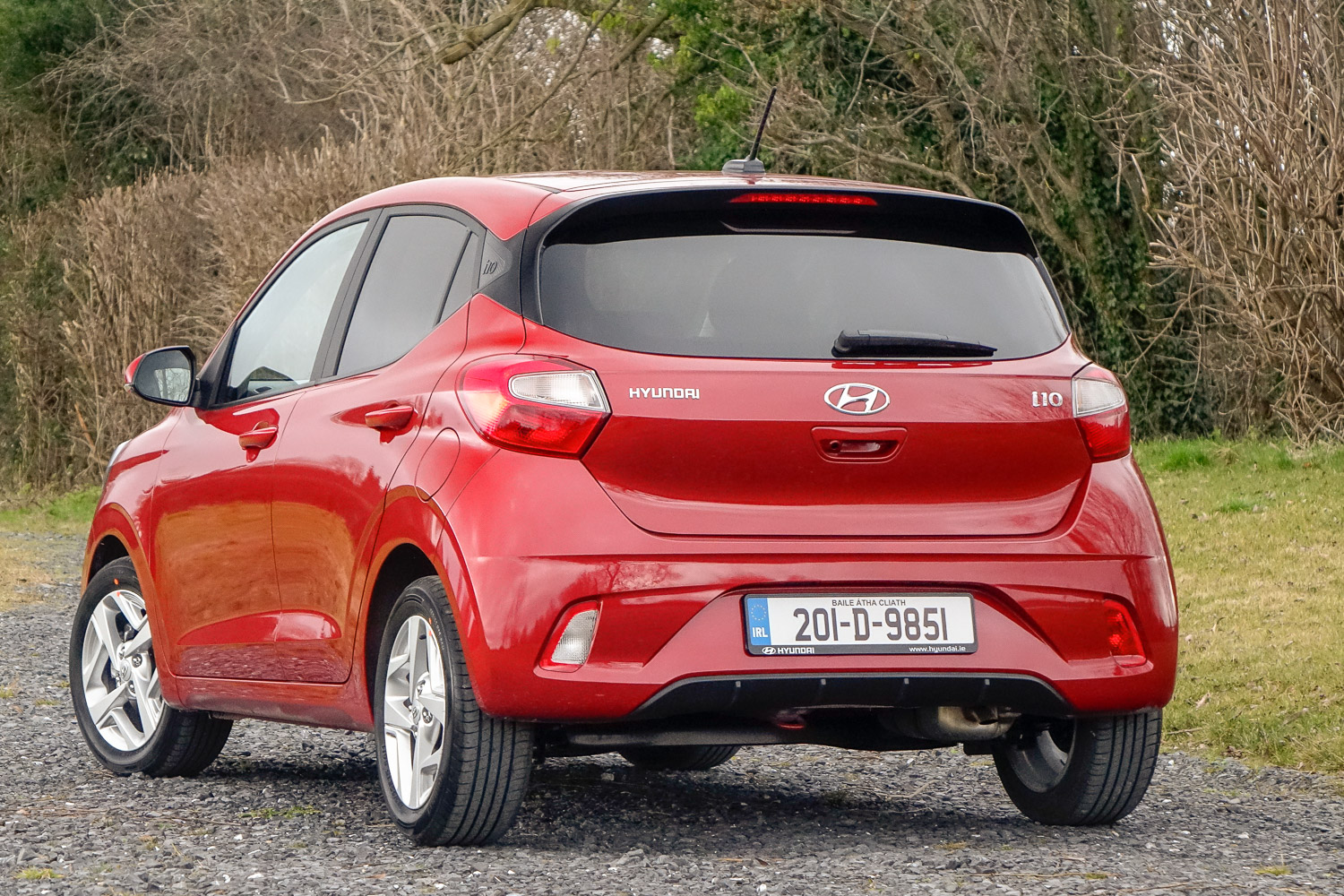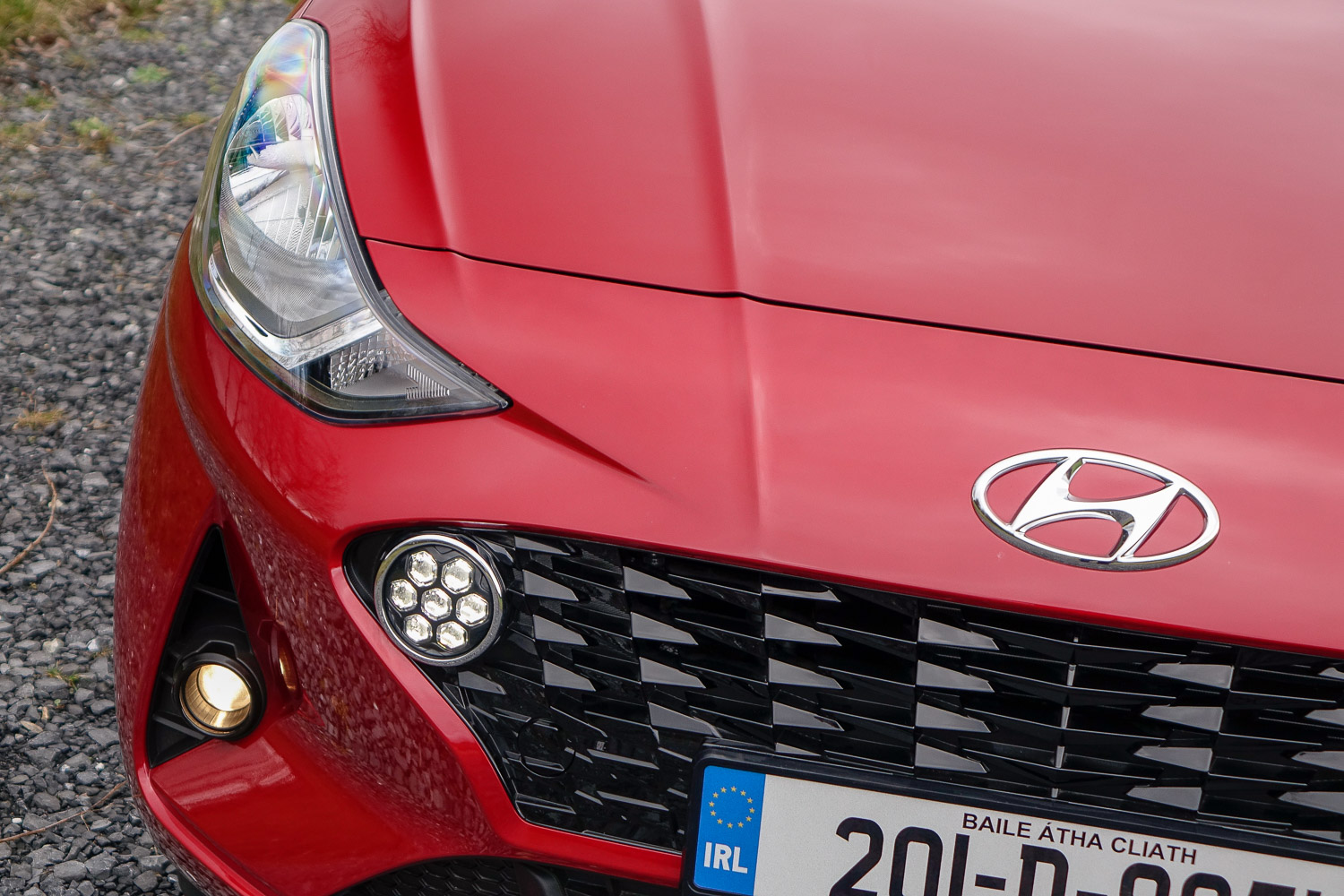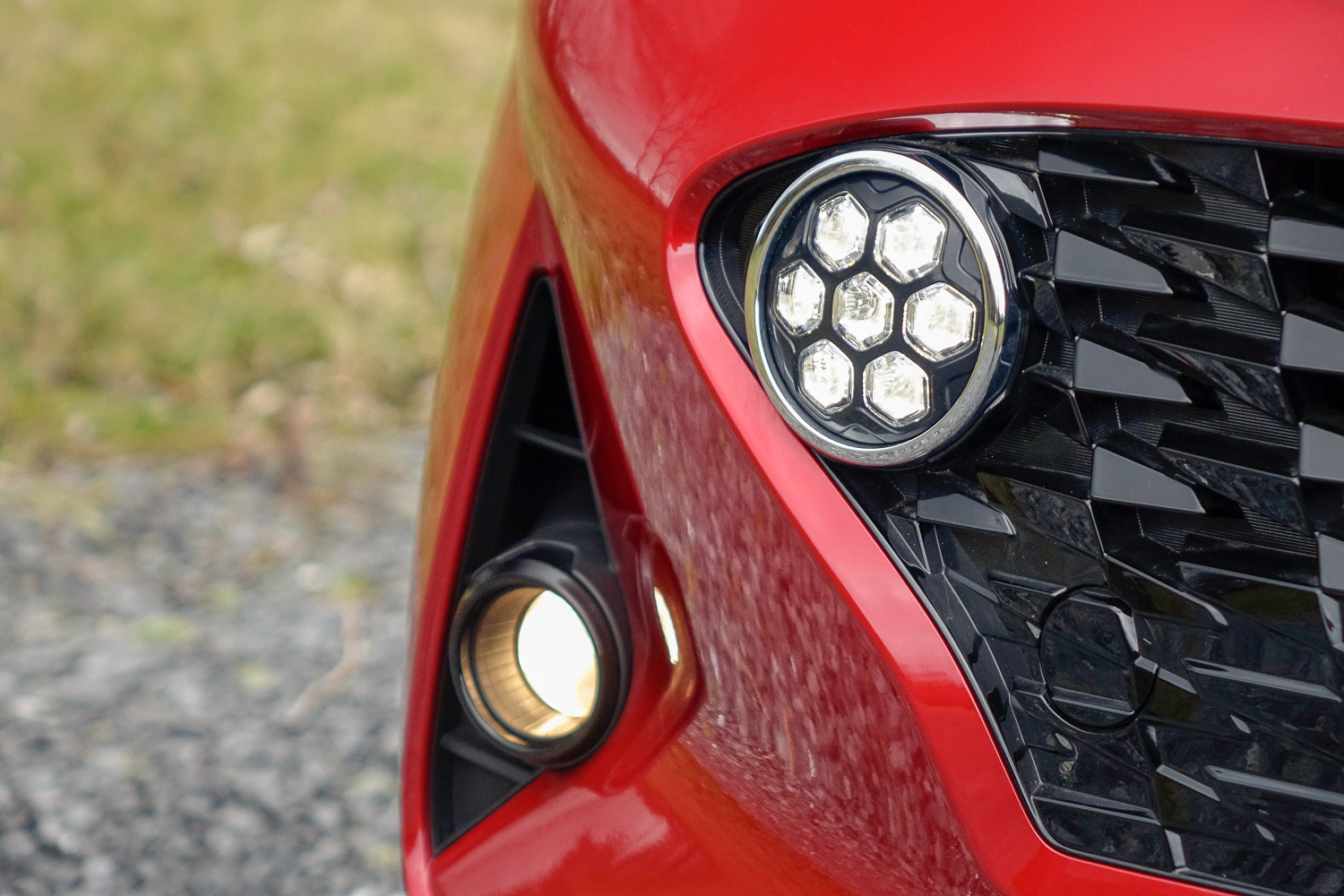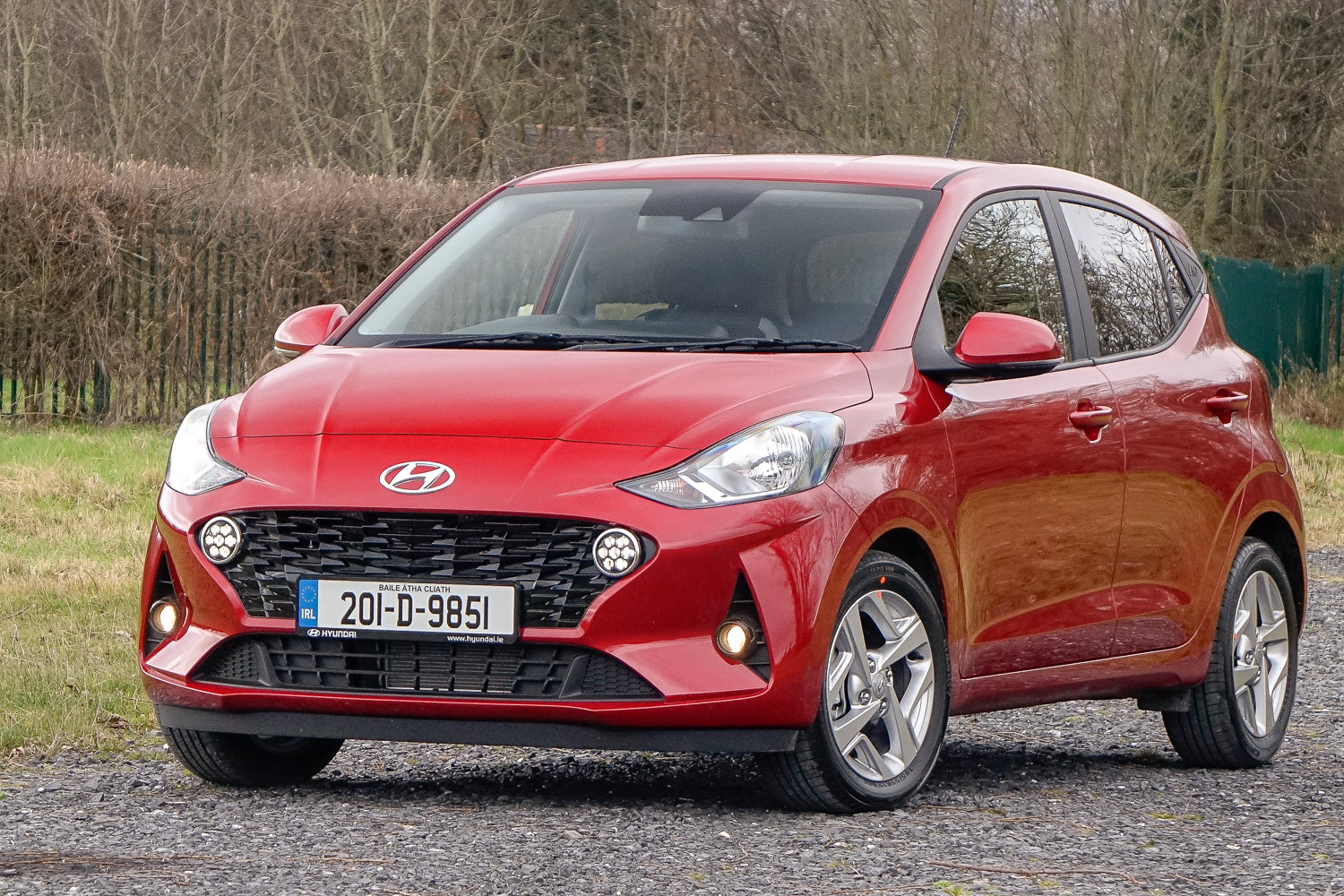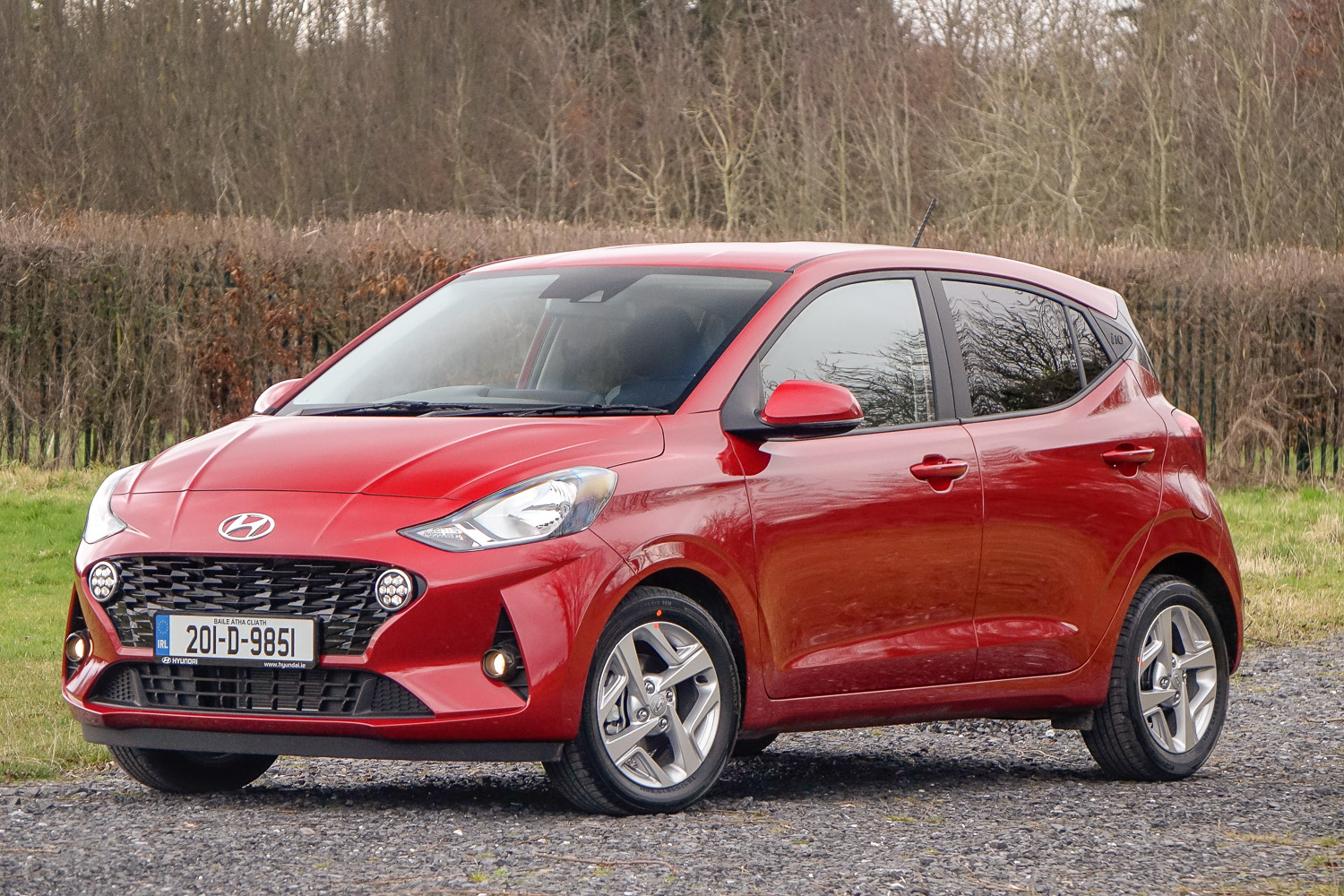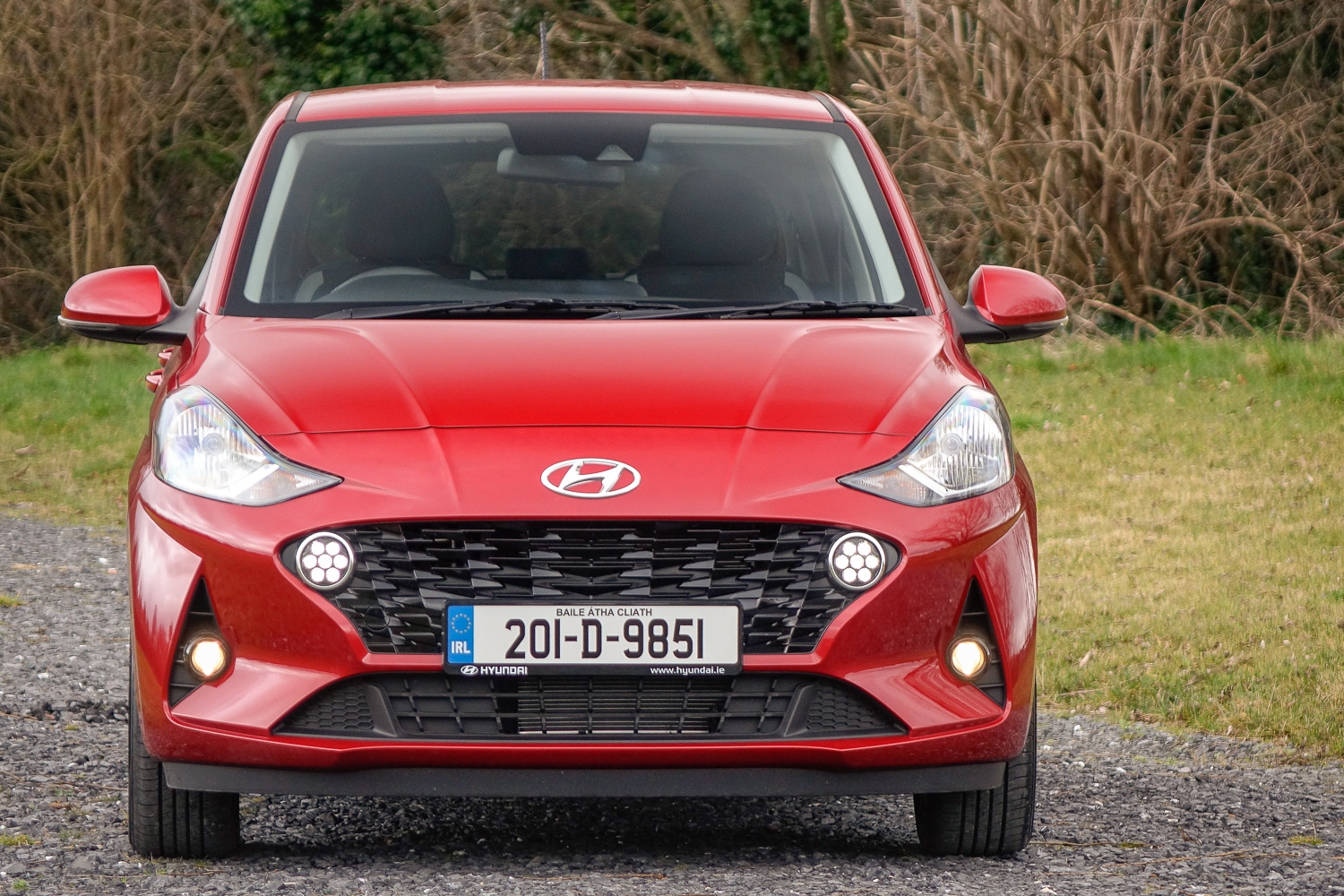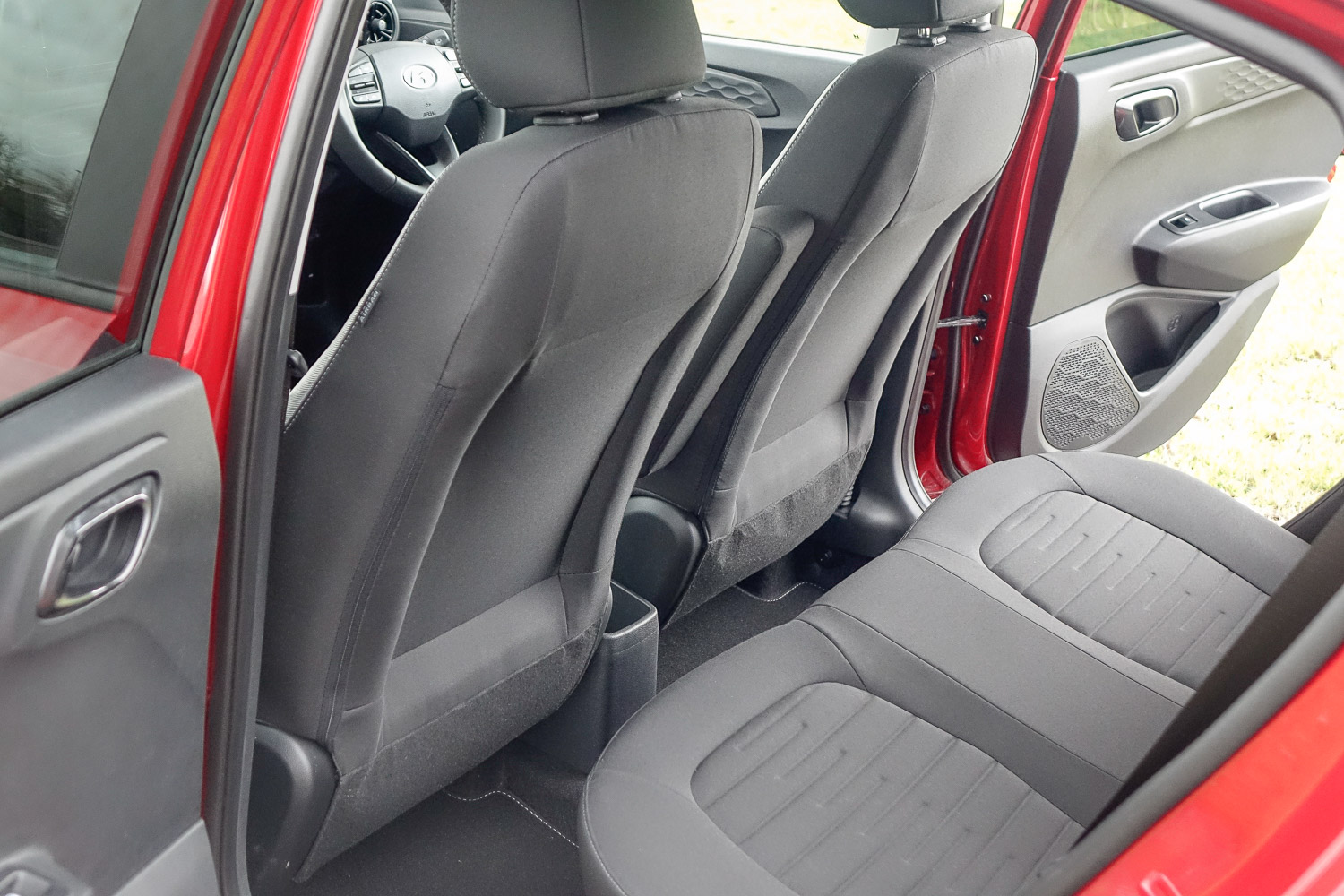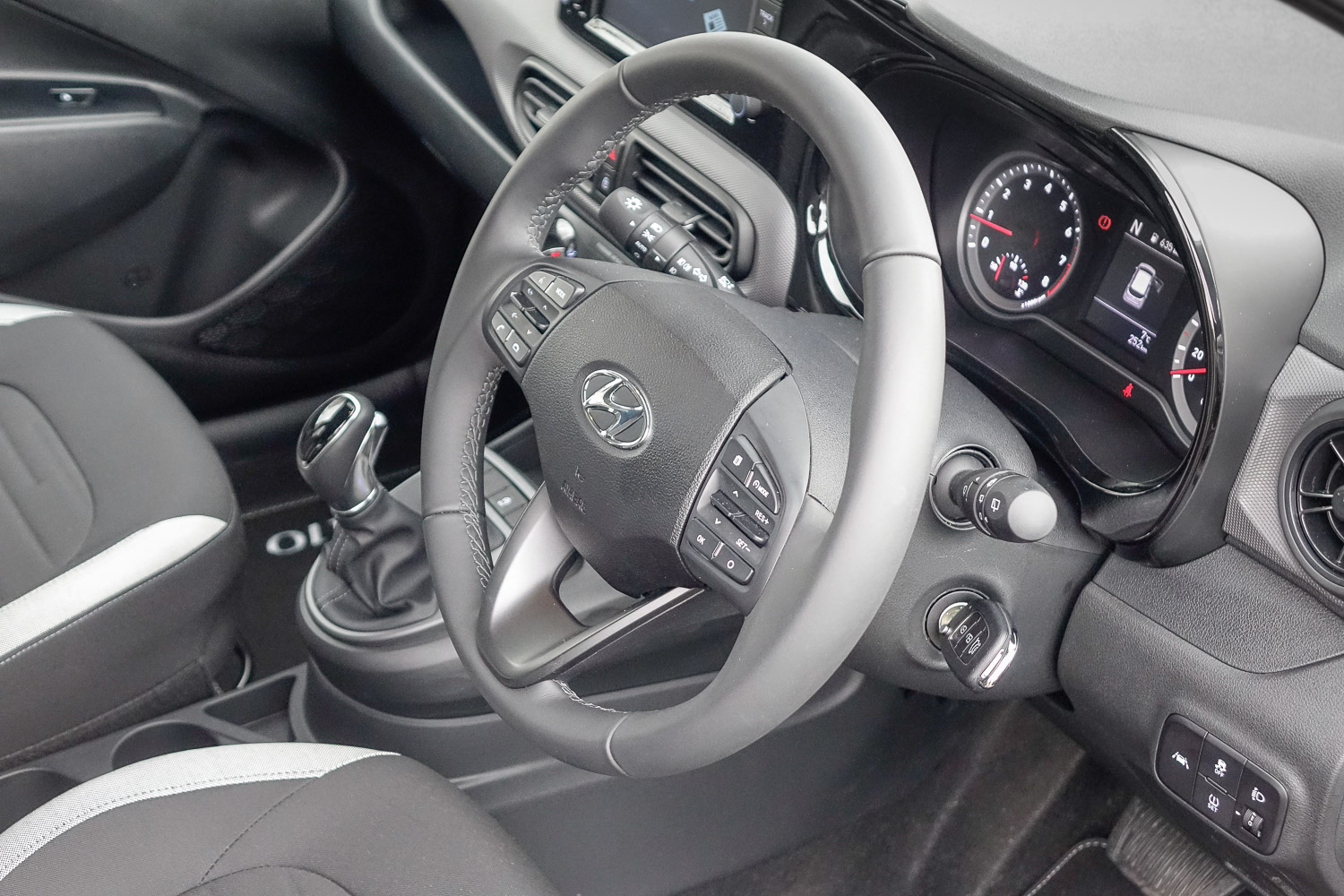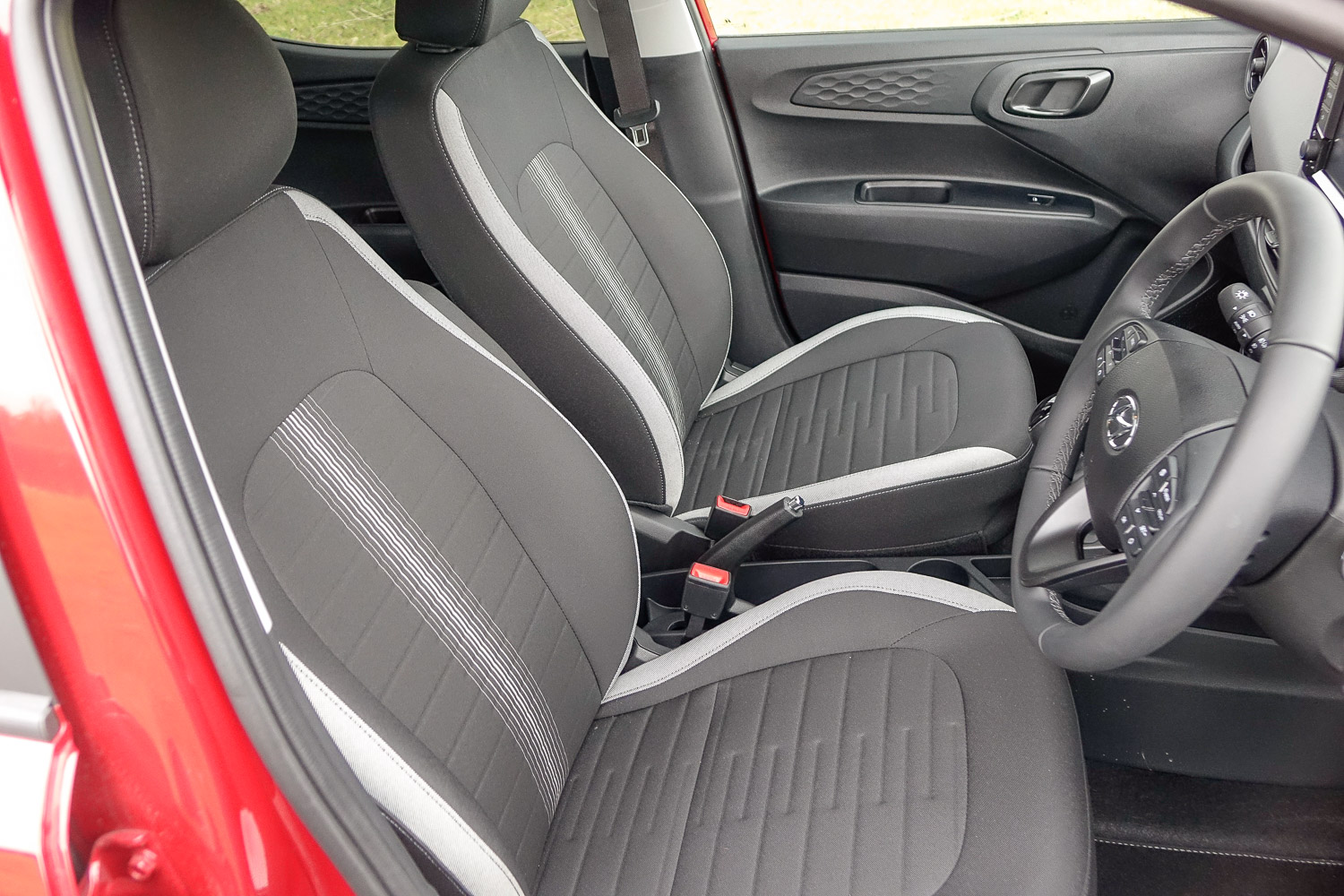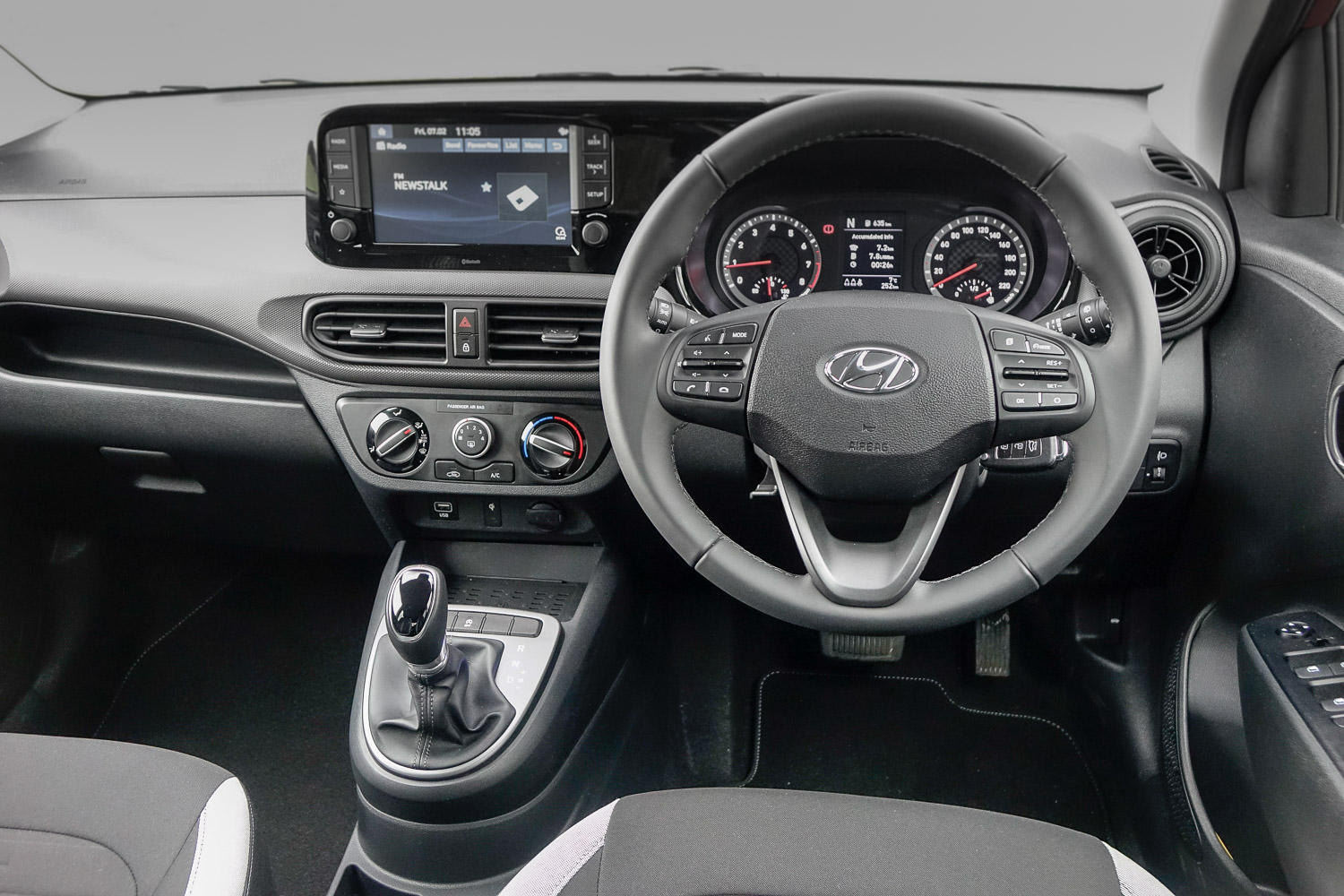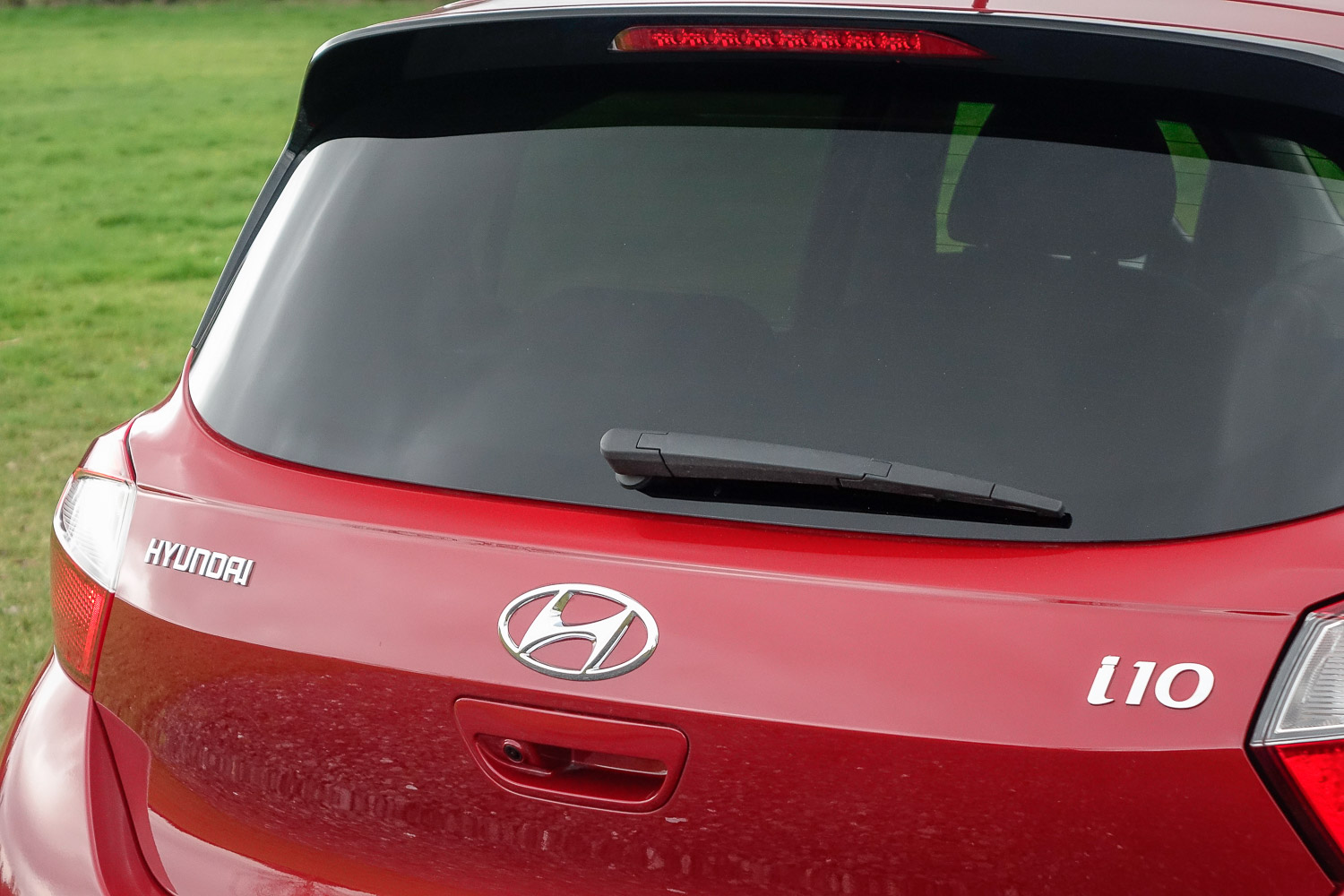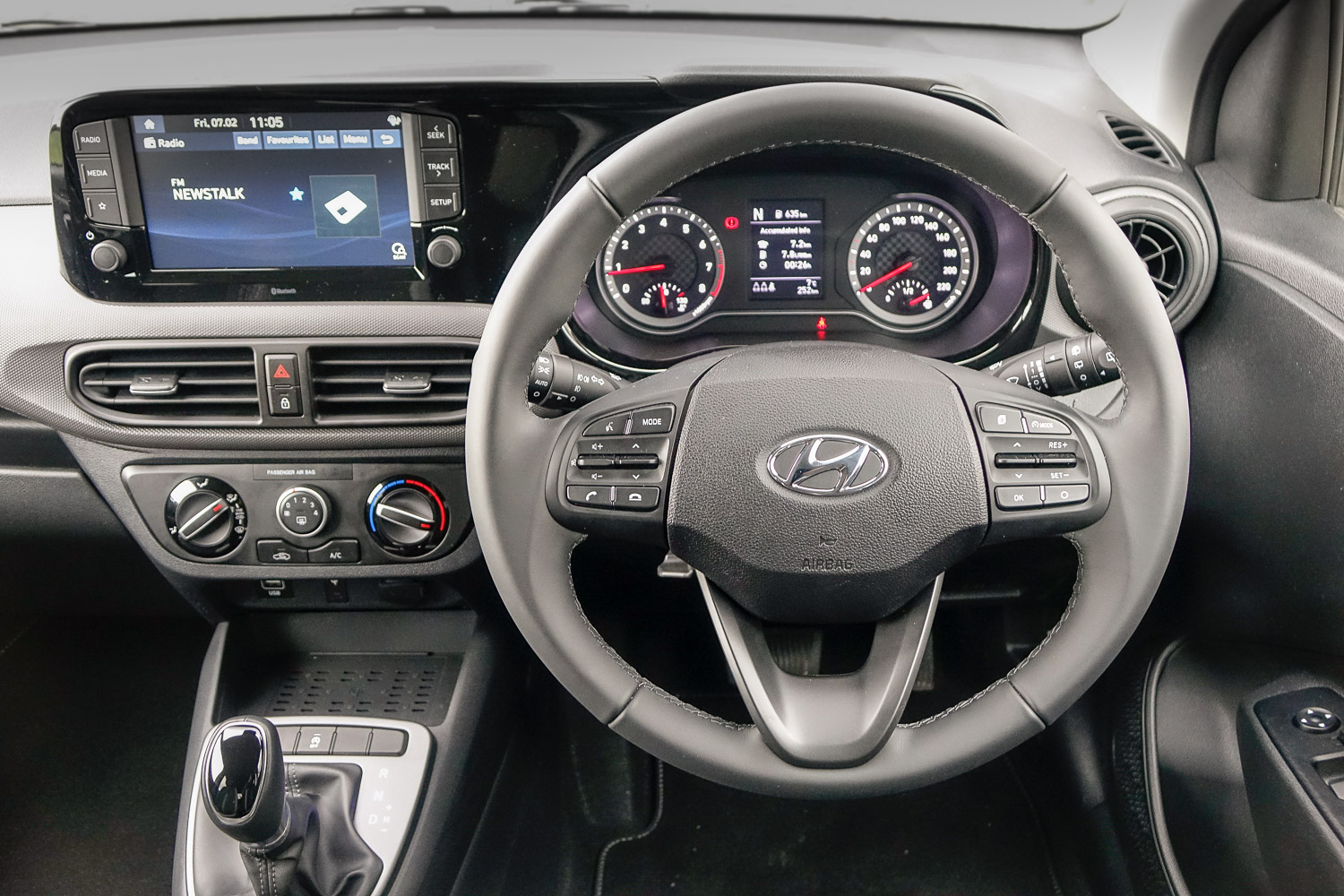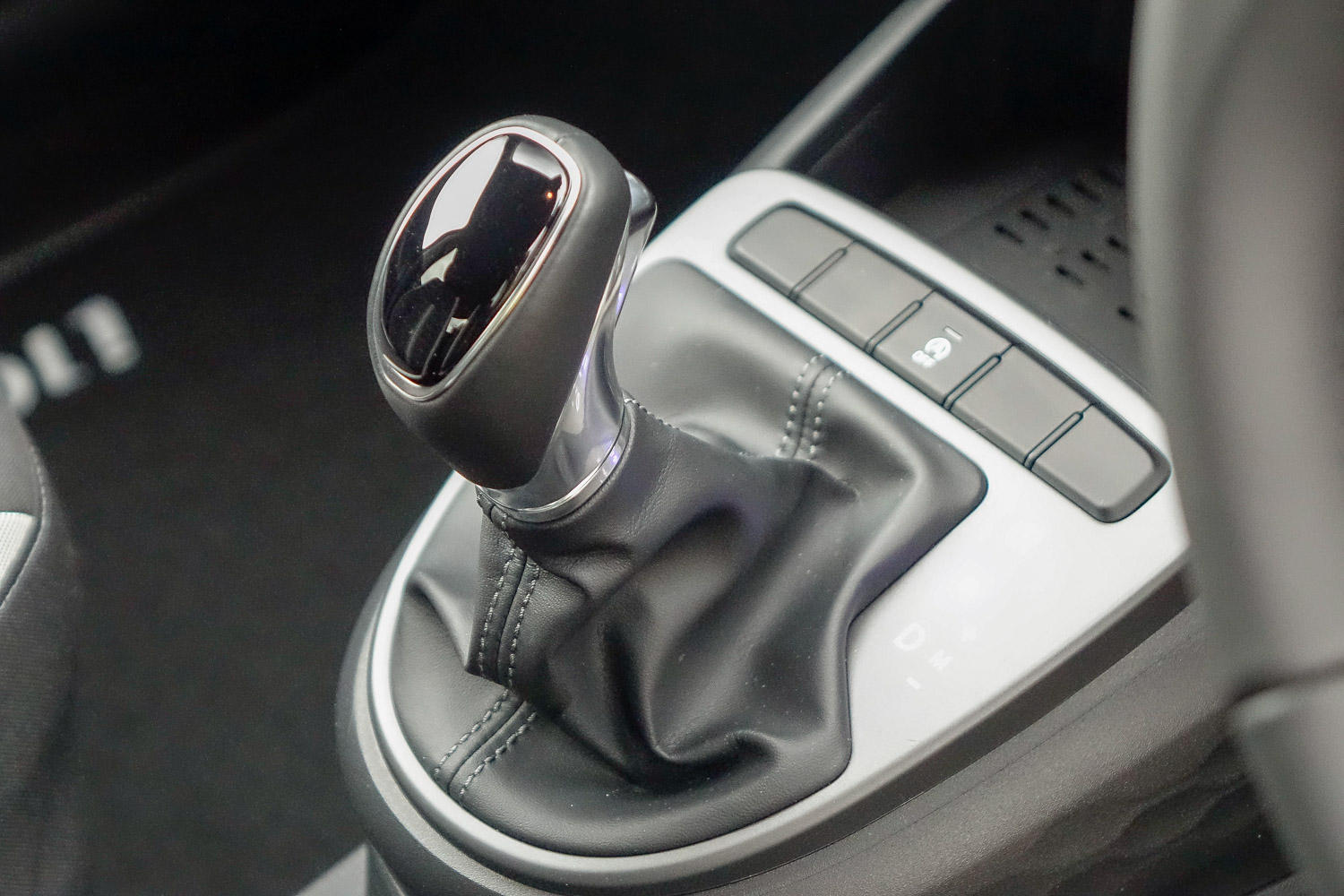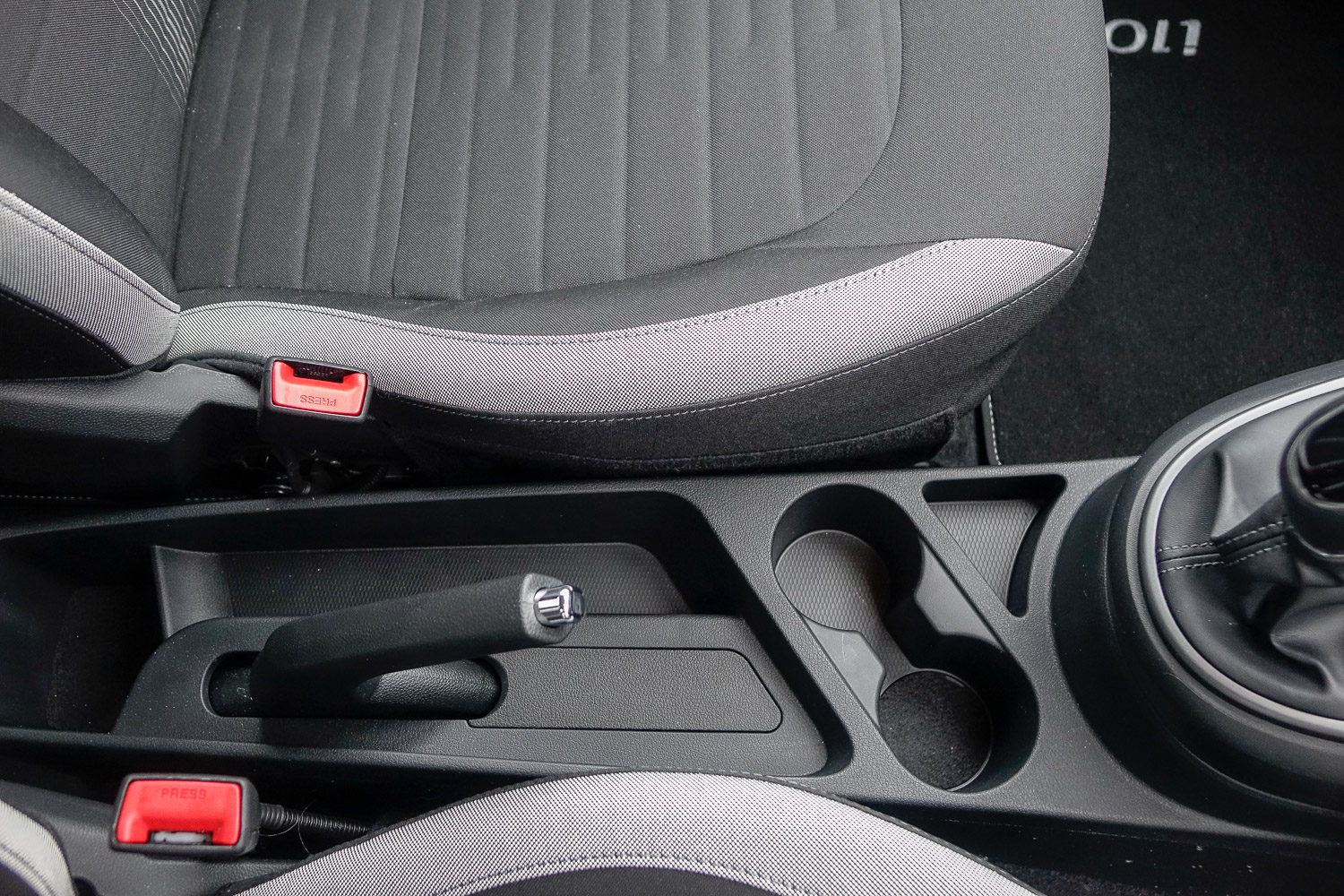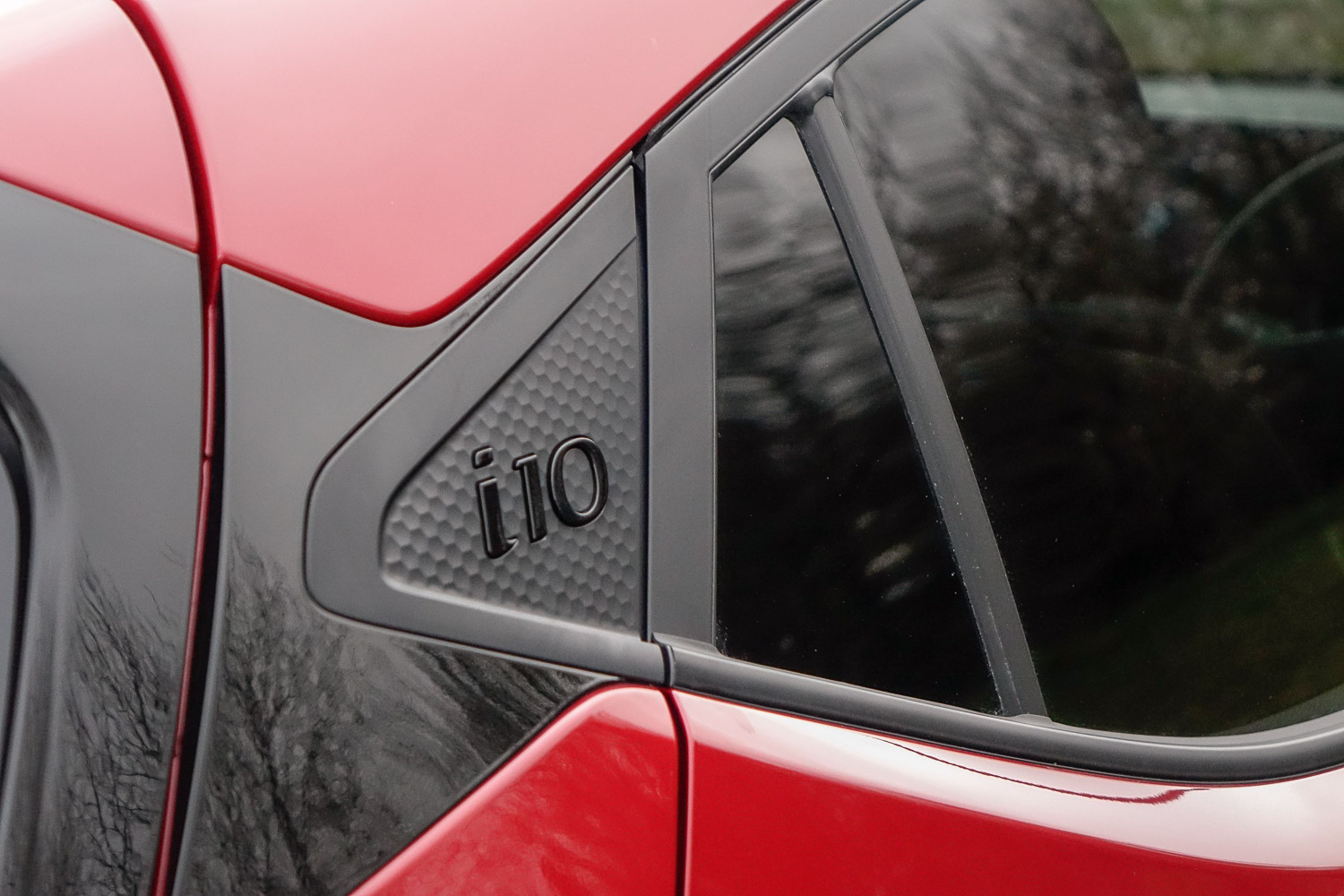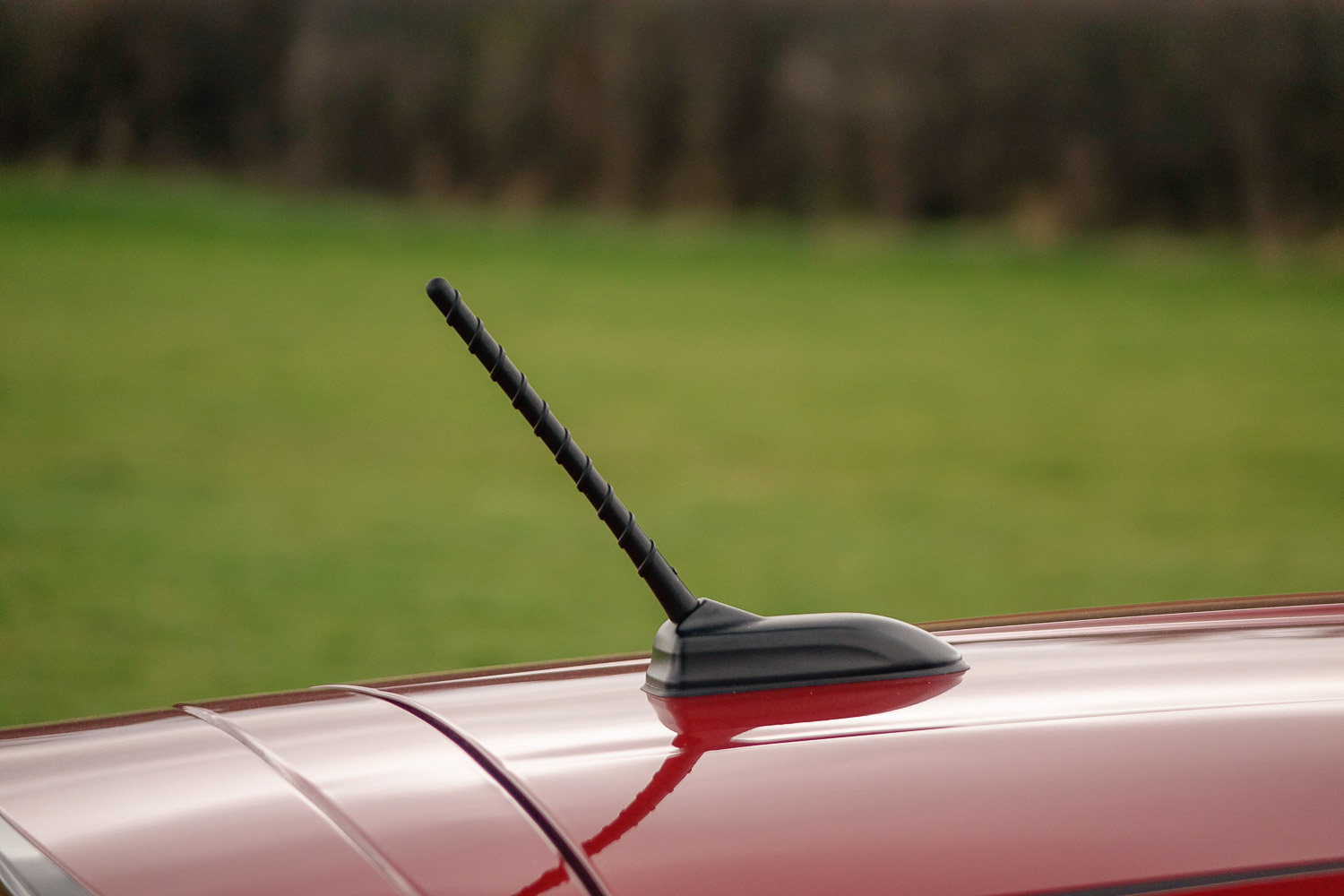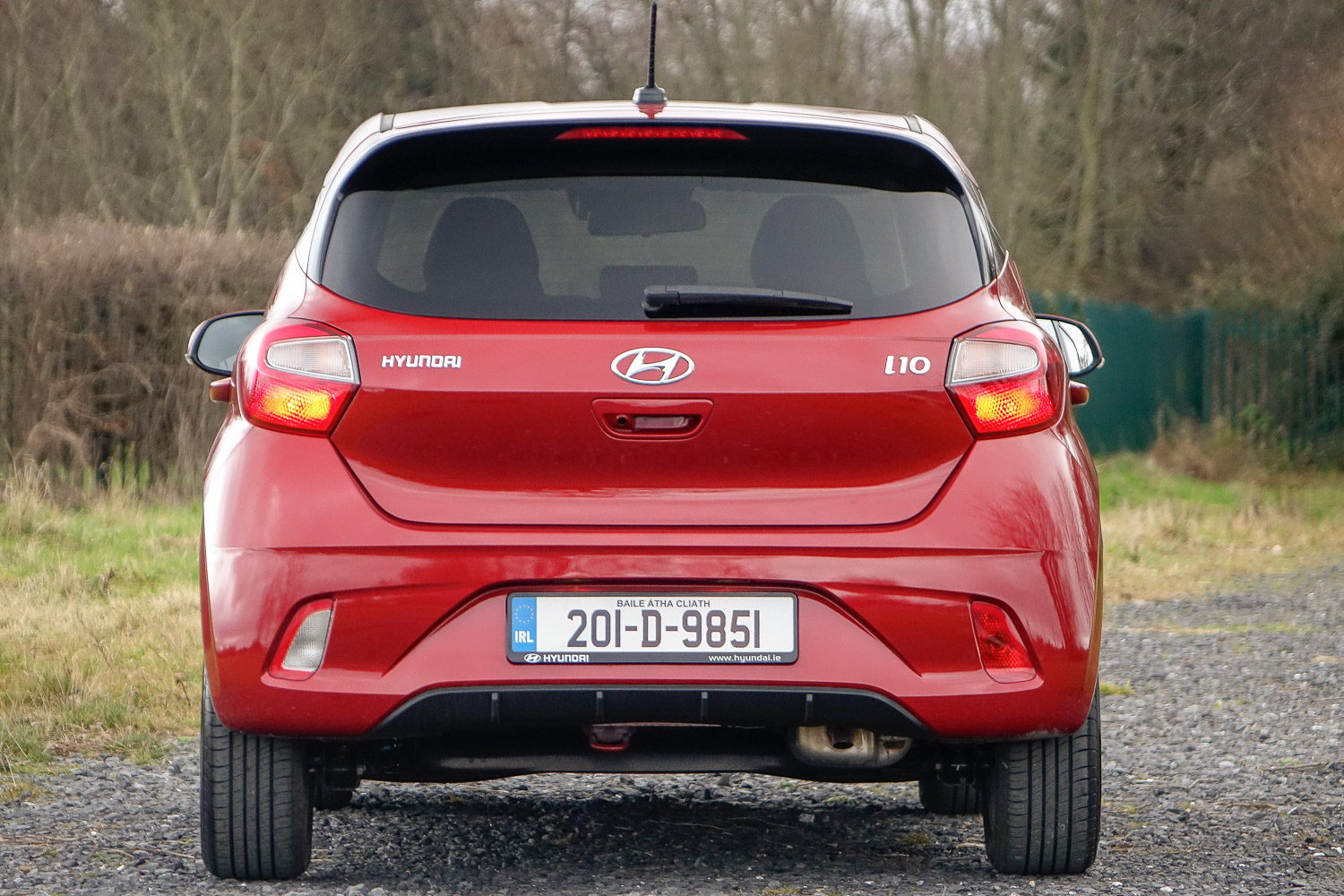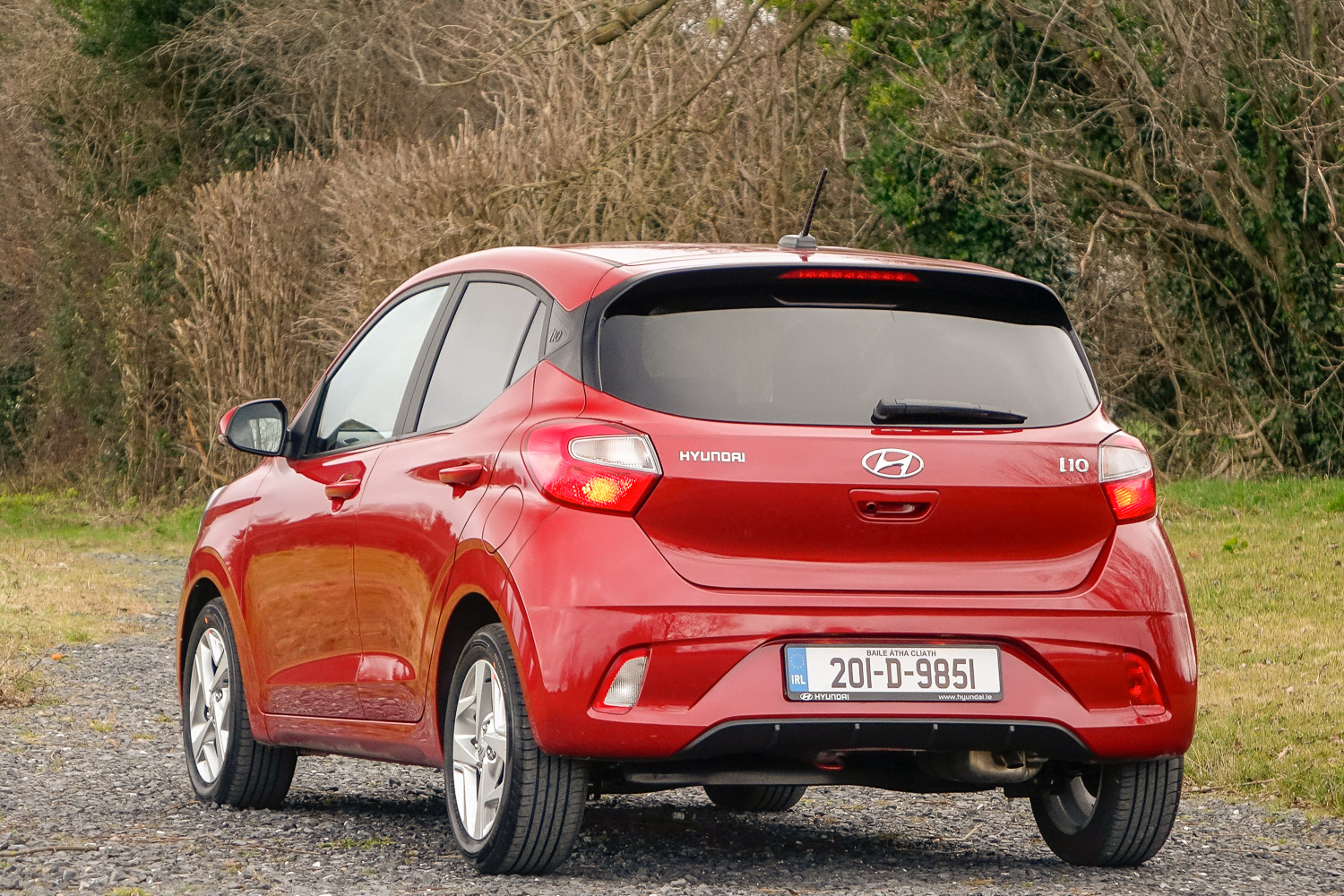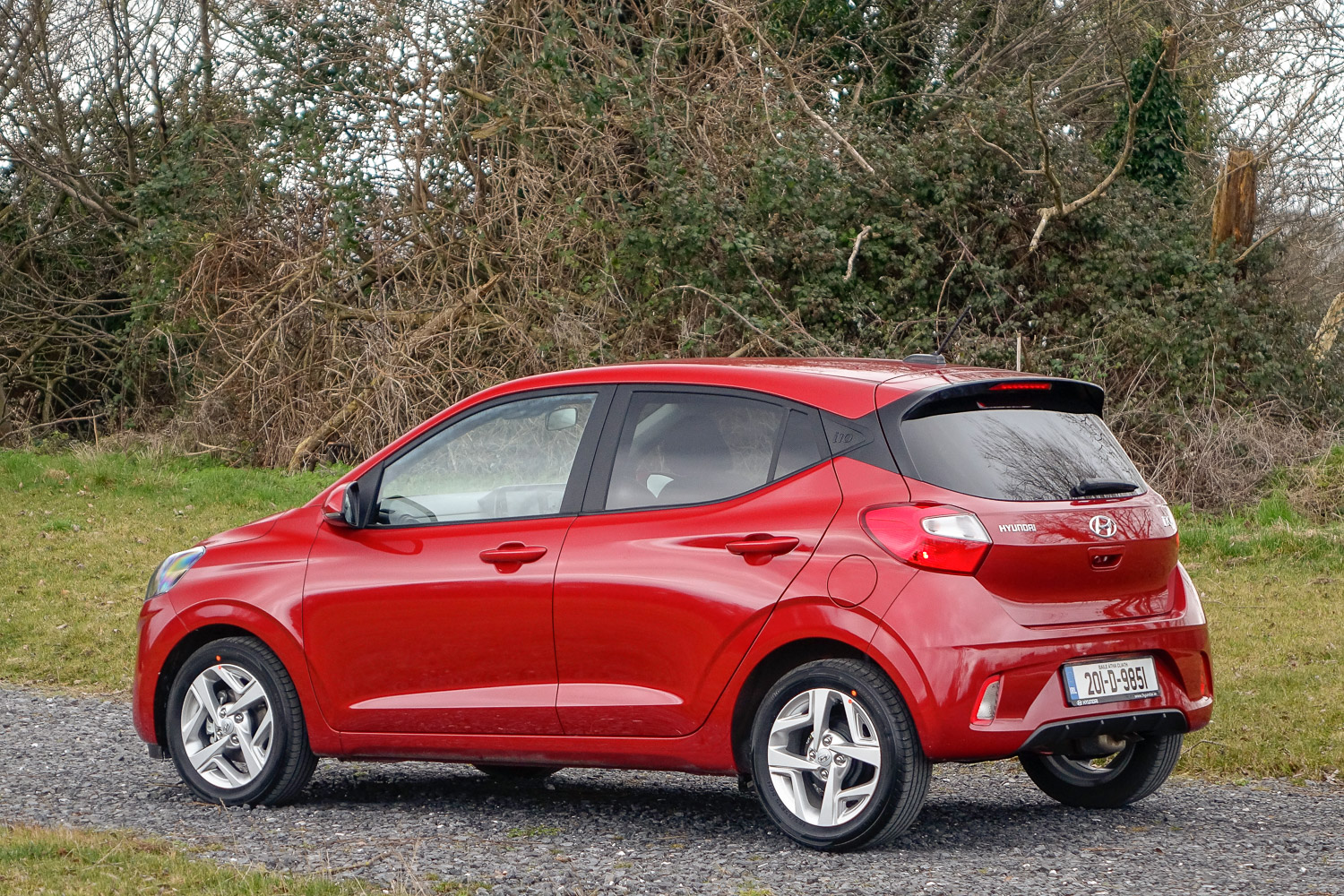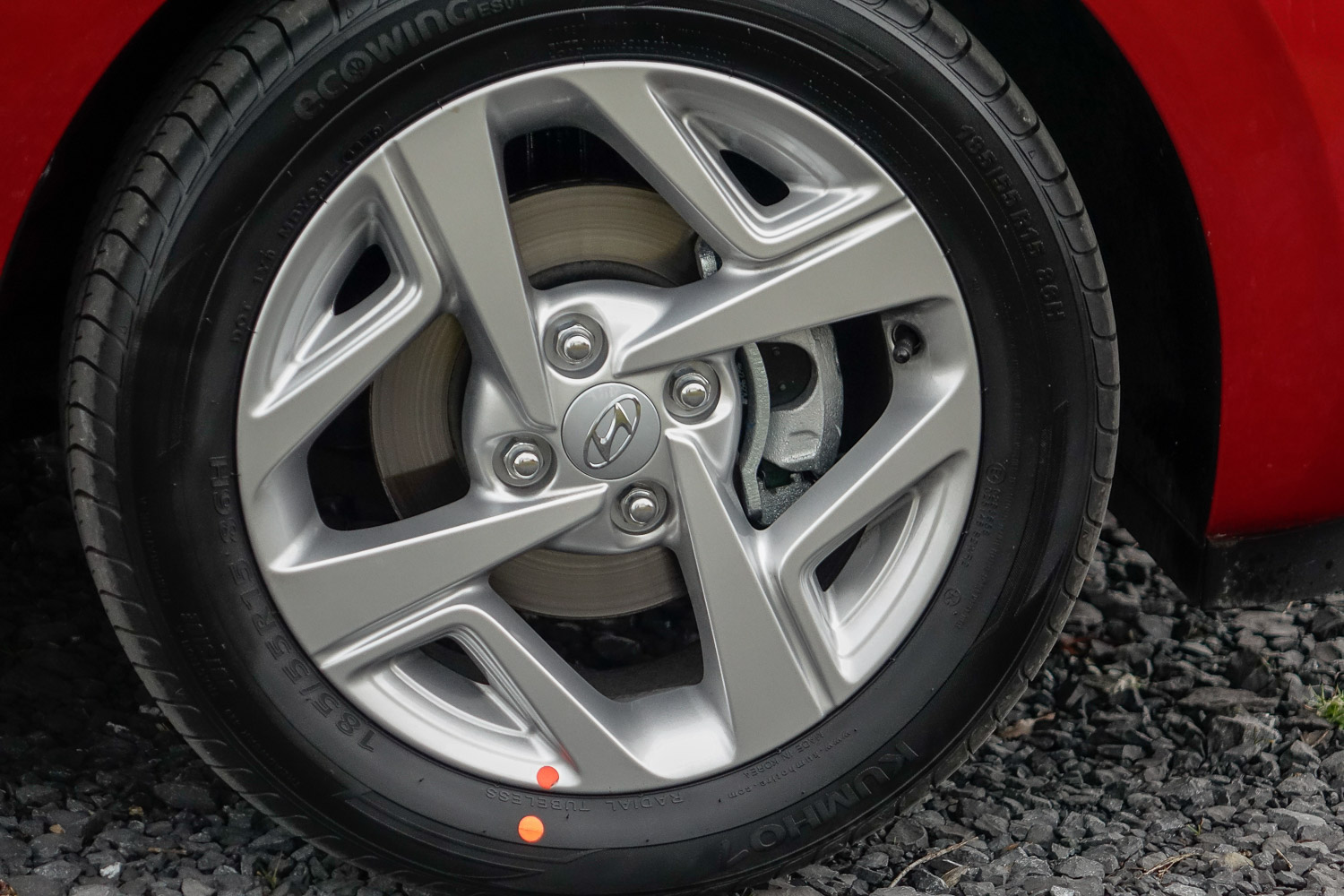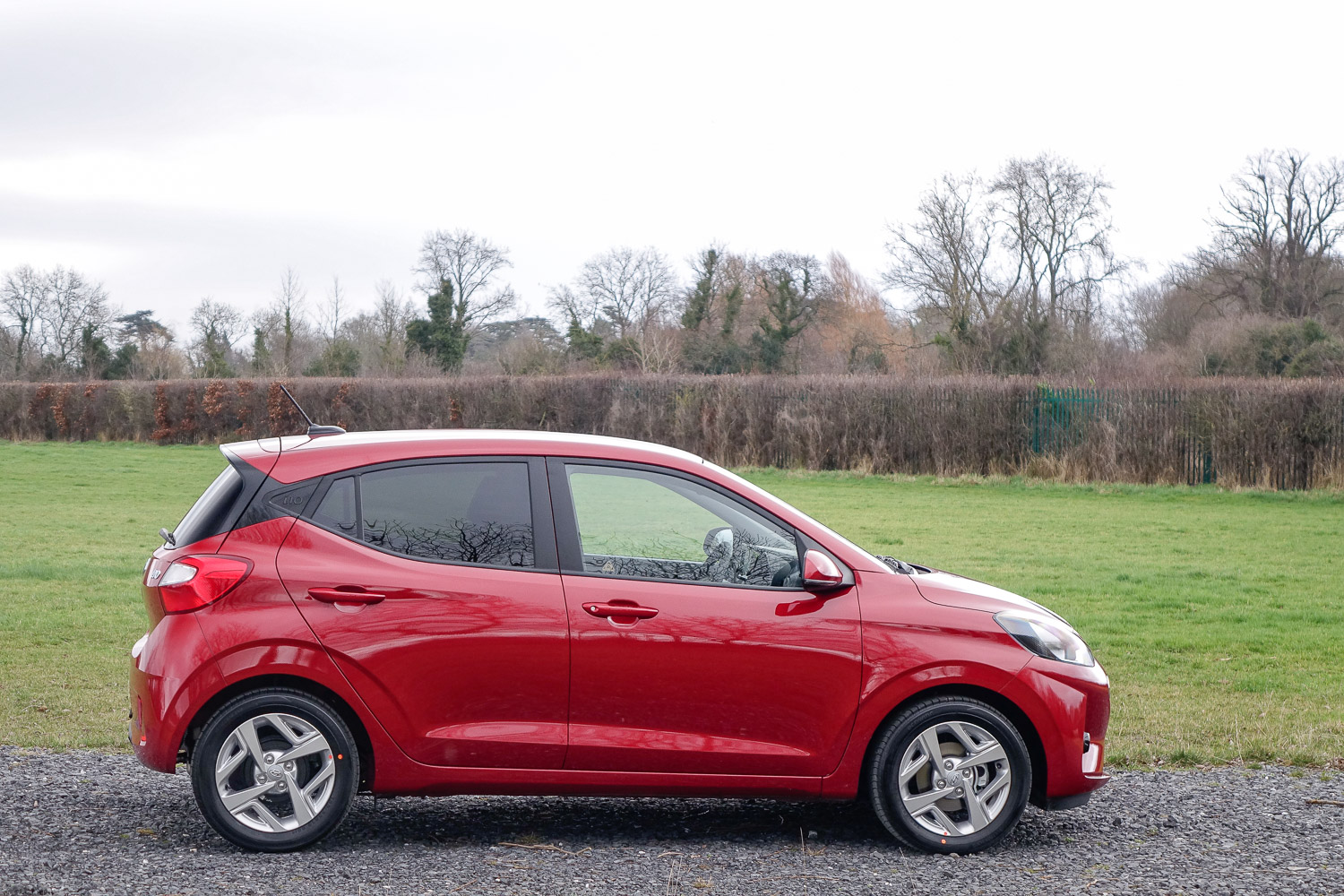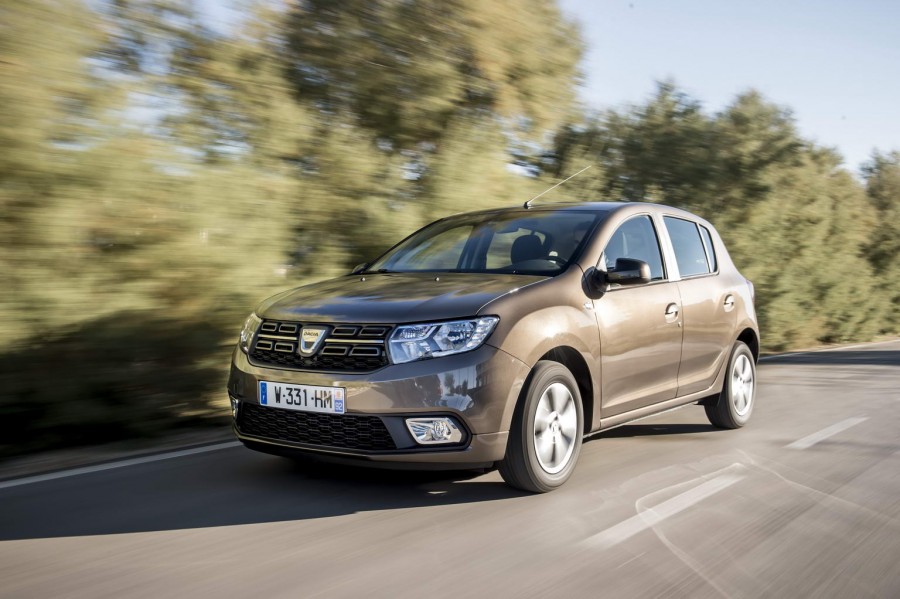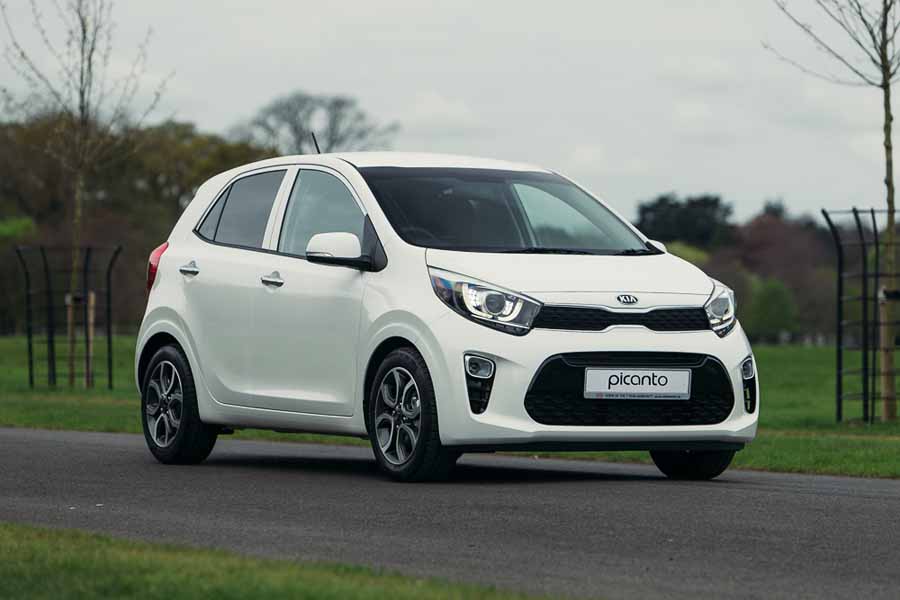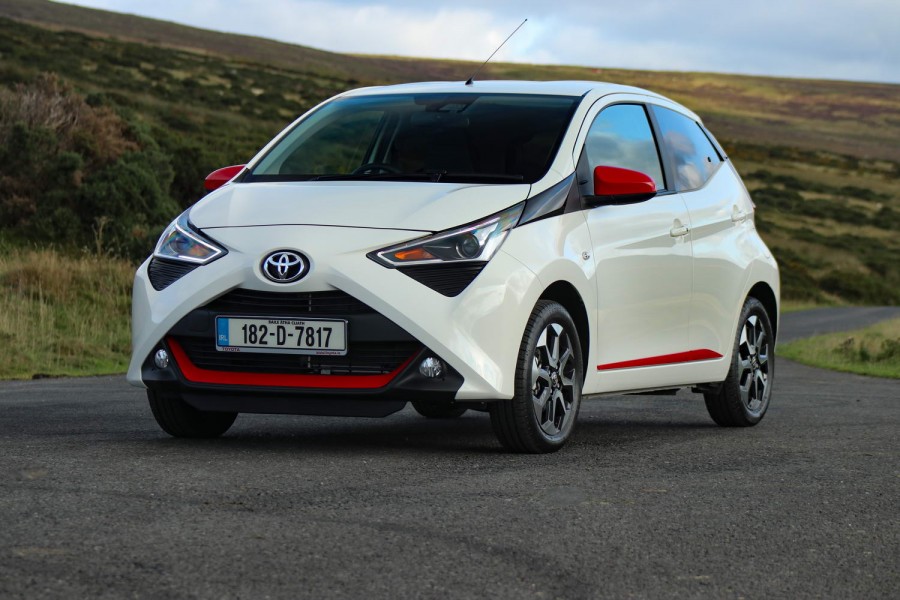What are you driving?
This is the new-for-2020 Hyundai i10, the smallest five-door hatchback the Korean company makes. This third generation of the breed follows on from one of our favourite city cars in the class, eclipsing most rivals with its combination of reliability, value and interior space. Hyundai hasn't forgotten any of that, but it has given the new i10 an extra dose of style, which is welcome, along with the availability of plenty of connectivity and safety tech, of course.
At the time of writing, the Hyundai i10 has only been in the country a few weeks, but it's selling well. Buyers choose from three different trim levels and either a manual or automatic gearbox. The i10 Classic gets a leather-trimmed multifunction steering wheel, split-fold rear seats, auto lights, cruise control with speed limiter, electric front windows, Bluetooth and the full suite of safety equipment fitted to all cars in the range. The price for all that is €14,745. Air conditioning is the only notable exclusion. That comes as standard on the i10 Deluxe, along with alloy wheels, LED daytime running lamps, rear privacy glass, electrically adjusted and heated door mirrors, electric rear windows and an alarm. The step up to this model is €1,500.
Next up is the i10 Deluxe Plus, from €17,245 (an extra €1,000 over Deluxe), which adds the eight-inch touchscreen infotainment, incorporating Apple CarPlay and Android Auto, a wireless device charger and rear-view camera. This is the only version buyers can add the two-tone colour scheme (for an additional €400) to, and it's also the only i10 you can specify an automatic gearbox on. That was fitted to our test car and apparently, some 20 per cent of i10 buyers will go for it.
All cars get the same three-cylinder petrol engine, which is willing enough, despite its low peak figures.
Name its best bits
It's difficult to ignore the new design of the Hyundai i10, as it's considerably more interesting looking than the worthy-but-dull exterior of its predecessor. To maximise it, go for the contrasting black roof, as it makes a big difference to the appearance. Inside, it's a but grey looking, and, as is the norm in the class, the plastics are hard-wearing rather than soft and squishy. Nonetheless, Hyundai's designers have added texture to the materials, and the i10's cabin feels more like a car from the segment above. That's partly due to the excellent touchscreen fitted to the Deluxe Plus version tested here, but also because there's loads of space inside.
Up front, this is highlighted by a well thought out centre console, which may not have any covered storage area, but has lots of sub-divisions for putting your stuff into, including a high-set shelf ahead of the gear lever for your phone (that's where the wireless charger is). Arguably, the rear cabin of the i10 is where it surpasses more rivals. Wide-opening back doors make it easy to get in and there, unlike most alternatives in the city car sector, you'll find three seatbelts. Sure, it's a squash to fit three adults in, but it's handy to know you could if you ever needed to. What's more, the centre section of the floor is quite low and, thanks to upright seating (and a notably high roof), there's even decent legroom for rear passengers.
The i10 is a cinch to drive, with light controls and good visibility. The leather-trimmed steering wheel helps it feel 'grown up', too, so it's good that's a standard-fit item. Though a small car, it's not all at sea on the motorway at all. In fact, Hyundai seems to have sacrificed some around-town comfort for suspension that gives the car a more secure feel at higher speeds.
Anything that bugs you?
The boot volume of 252 litres isn't anything to write home about, and it's accessed over a sizeable lip, though at least there are split-fold seats as standard for carrying bigger items when needed. The folded down seat backs create a step, but that's the norm at this price point and car size.
Other than that, we really didn't like the automatic transmission. It's one of those 'automated manual' designs, where the gearbox internals are just like a manual's, but the operation of the clutch is robotised. Left in fully-automatic mode (the default), there's a huge delay in each up-change of the gears that cause the passengers to lurch forward and then back in their seats - unless the driver has the wherewithal to perfectly time a lift of the throttle with the automatic gear change. Thankfully, you can drive around this by slotting the lever to the right into the manual setting, but you still need to lift your accelerator foot during gearchanges (as you would in a normal manual car, in fairness) for maximum smoothness, which I suspect few will ever do. In short, only go for the automatic option if you absolutely have to.
And why have you given it this rating?
Automatic gearbox aside, the new Hyundai i10 carries on where its predecessor left off, giving buyers of small cars a high-quality option that is well-specified for the price, well-engineered and more spacious than most. To all that it has added a welcome dollop of style and technology.

